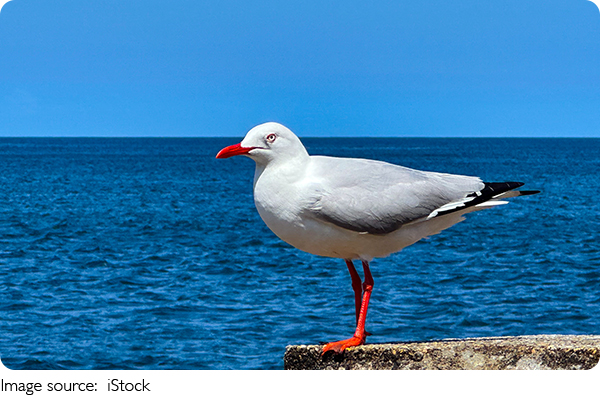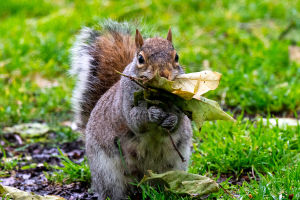Nature Returns

Have you ever wondered what it would be like to see wild animals thriving in their natural habitats again? Across the globe, rewilding projects are making this vision a reality.
These efforts focus on restoring wild species and natural landscapes that have been damaged or lost due to human activities. Rewilding is not just about animals returning—it's about rebuilding ecosystems and reconnecting humans with nature.
Let's explore what rewilding is, why it matters, and some inspiring examples of success.
What Is Rewilding?
Rewilding is a conservation strategy aimed at restoring ecosystems to their natural, self-sustaining state by reintroducing native species, especially key animals known as keystone species. These species play critical roles in maintaining ecological balance. Unlike traditional conservation that often focuses on protecting individual species, rewilding emphasizes restoring the interactions between plants, animals, and the environment.
Projects may include bringing back large herbivores like elephants, predators like wolves, or smaller animals that affect the landscape. The goal is to create habitats where natural processes—such as predation, grazing, and seed dispersal—can occur again.
Why Is Rewilding Important?
Human development has altered much of the planet's wild areas, leading to loss of biodiversity and weakened ecosystems. Without healthy ecosystems, problems such as soil degradation, reduced water quality, and climate instability can worsen.
Rewilding helps reverse these trends by reintroducing animals that trigger natural processes. For example, wolves control deer populations, preventing overgrazing and allowing forests to regenerate. Similarly, beavers create wetlands that support diverse wildlife and improve water management.
According to ecologists like Dr. Dave Goulson, rewilding also offers a way to combat climate change by restoring natural carbon sinks such as forests and peatlands. This makes rewilding a powerful tool for environmental health.
Notable Rewilding Success Stories
Several projects around the world demonstrate the positive impact of rewilding:
• Yellowstone National Park, USA: The reintroduction of wolves in 1995 brought profound changes. Wolves reduced elk numbers and changed their grazing behavior, allowing vegetation to recover. This cascade effect improved habitat for birds, beavers, and other species.
• European Buffalo in Poland: Once nearly extinct, the European buffalo was brought back through breeding programs and release into protected forests. Today, they roam wild in areas like the Białowieża Forest, contributing to forest health by grazing and seed dispersal.
• The Knepp Estate, UK: This private estate turned farmland into a rewilding reserve, allowing natural processes to take over. Species like deer, wild ponies, and rare birds have returned, and the land has seen a remarkable increase in biodiversity.
Challenges and Controversies
Despite its benefits, rewilding can face challenges. Problems with local communities sometimes arise due to fears about predators or land use changes. Additionally, carefully selecting which species to reintroduce requires extensive scientific study to avoid disrupting current ecosystems.
There is also debate about how much human intervention is acceptable. While some advocate for fully hands-off approaches, others stress the importance of ongoing management to ensure balance.
The Role of Communities
Successful rewilding projects often involve local communities, ensuring people's needs and concerns are addressed. Education and involvement help build support and create opportunities for eco-tourism and sustainable livelihoods.
By including indigenous knowledge and respecting cultural values, rewilding can become a collaborative effort that benefits both nature and people.
Future Prospects for Rewilding
As climate change and biodiversity loss accelerate, rewilding gains increasing attention from governments, NGOs, and scientists. International initiatives like the UN Decade on Ecosystem Restoration promote rewilding as a critical part of global conservation efforts.
Technology is also playing a role, with drones and tracking devices helping monitor wildlife and habitats more effectively.

How You Can Help
You might wonder how you can support rewilding from afar. Supporting conservation organizations, spreading awareness, and advocating for policies that protect natural habitats are all valuable contributions.
Even small lifestyle changes, such as reducing waste and choosing sustainable products, contribute to healthier ecosystems.
Conclusion: Reconnecting with Wild Nature
Rewilding projects remind us that nature is resilient and can recover with care and patience. They offer hope that wild animals and healthy ecosystems can thrive again, enriching our planet and our lives.
What wild species would you love to see return to your local environment? As we explore and support rewilding efforts, we take part in an exciting journey to restore the natural world—one where humans and wildlife coexist in balance.
Let's work together to bring nature back!
-
 City Wildlife WondersHow Do Animals Thrive in Urban Spaces? Discover the Surprising Ways Wildlife Adapts to City Life!
City Wildlife WondersHow Do Animals Thrive in Urban Spaces? Discover the Surprising Ways Wildlife Adapts to City Life! -
 Turtles in TroublePlastic Waste Is Choking Sea Turtles—How Did It Get This Bad and What Can We Do?
Turtles in TroublePlastic Waste Is Choking Sea Turtles—How Did It Get This Bad and What Can We Do? -
 Remember What MattersThey grieve, reconnect, and never forget—how elephants feel more than we thought.
Remember What MattersThey grieve, reconnect, and never forget—how elephants feel more than we thought.